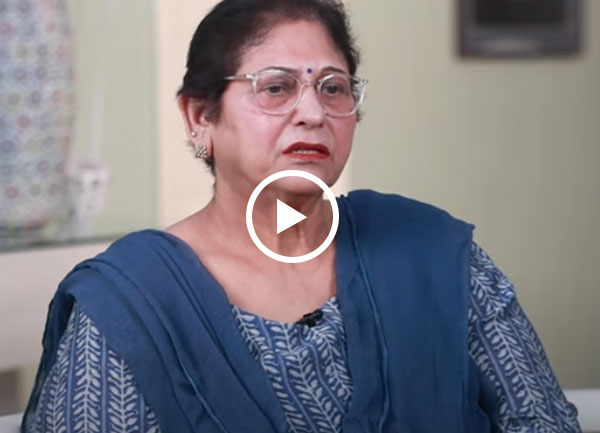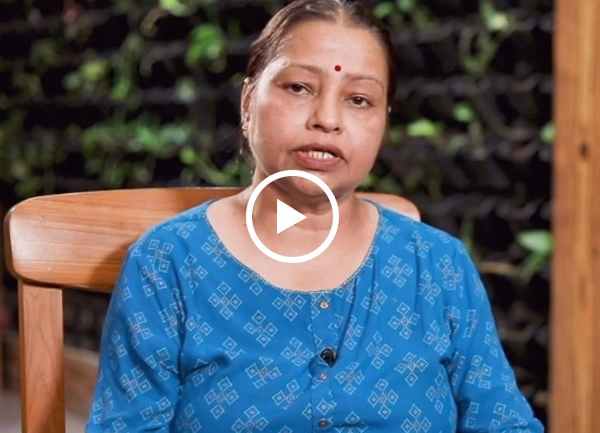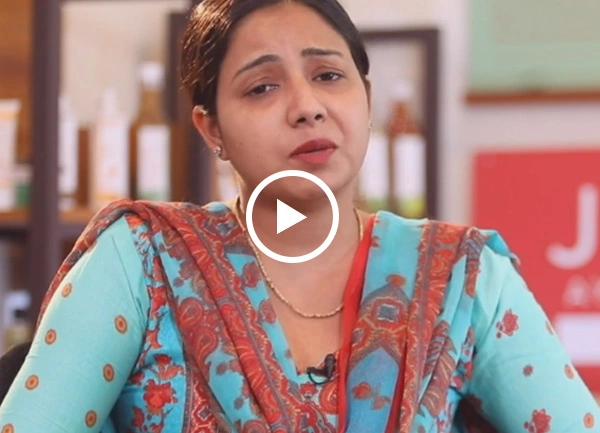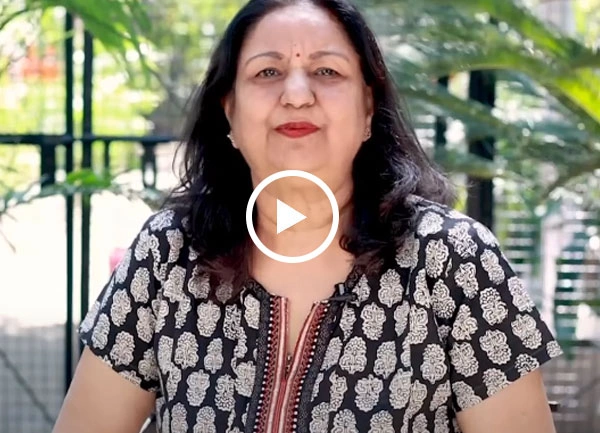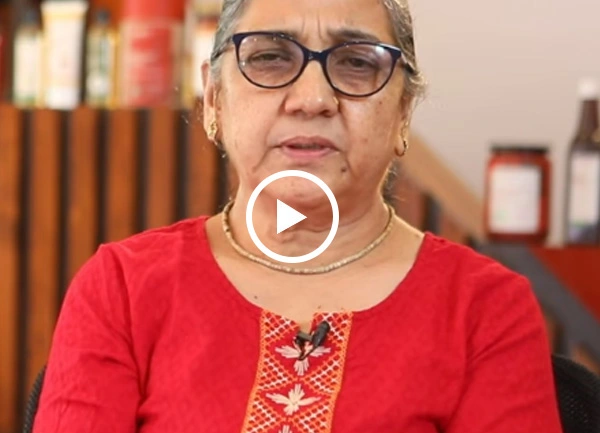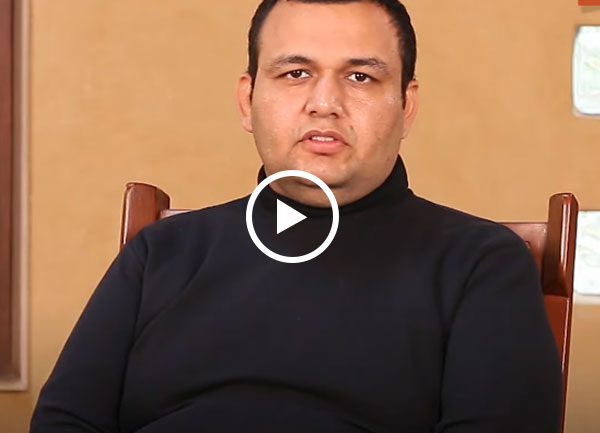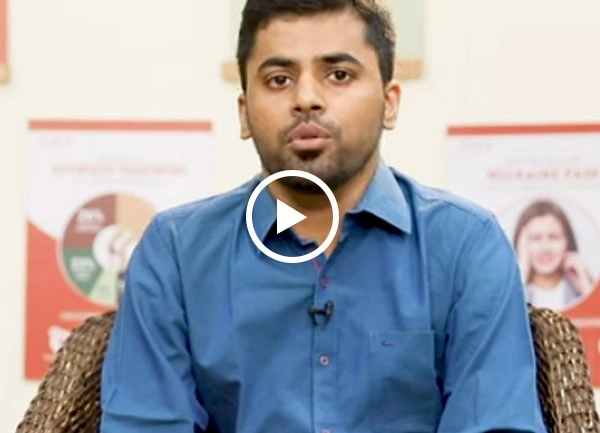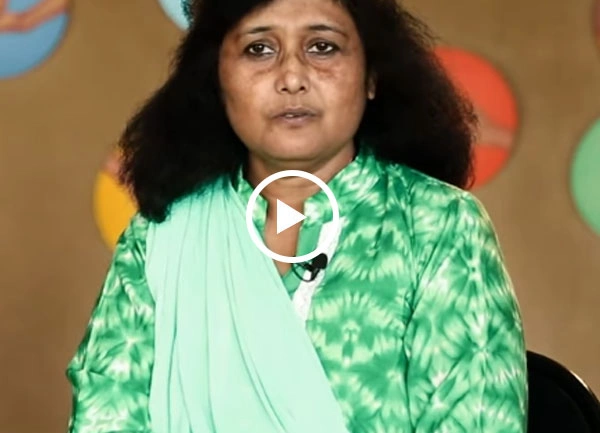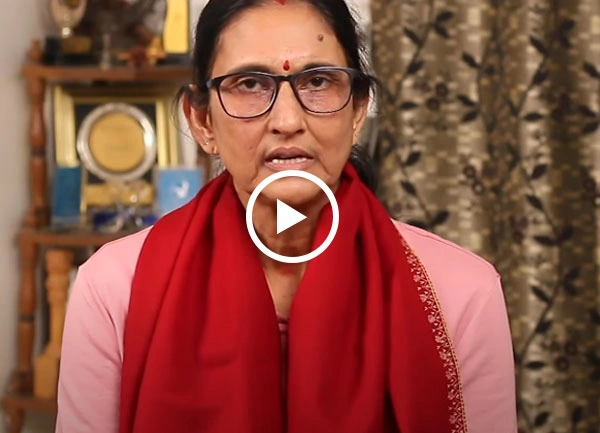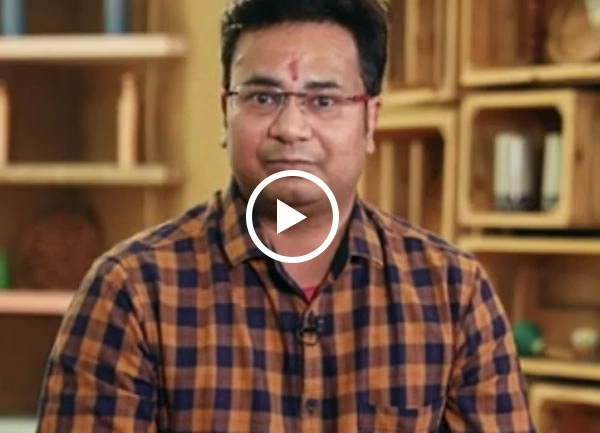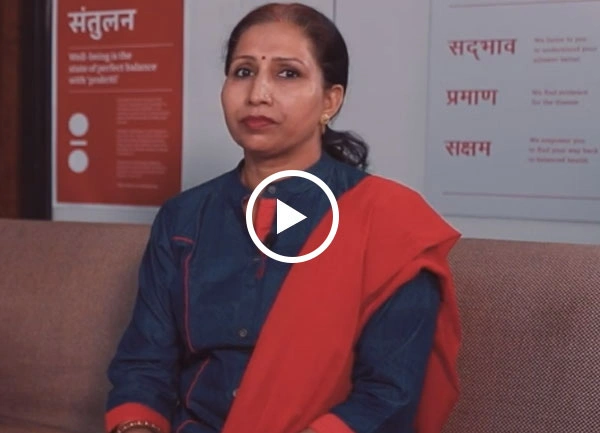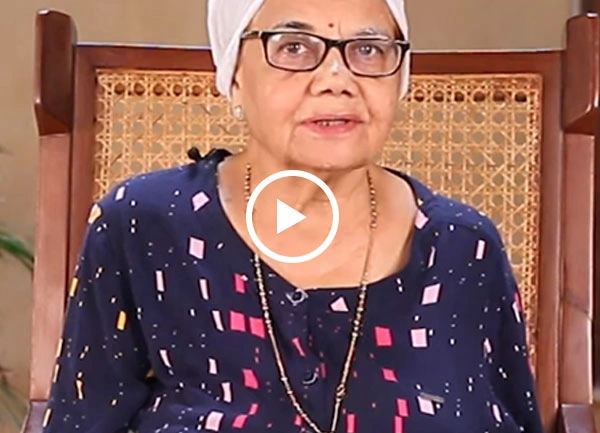

Successful Treatments
Clinics
Doctors
What is Arthritis?
Arthritis is one of the long-term conditions defined as an ‘inflammation of the tissue covering the joint (synovium) leading to a swelling, stiffness and pain’. It is a condition that influences movement and, indeed, makes it very hard to perform normal routines. Several types of arthritis exist, with each being categorised based on the underlying factors and the impact it causes. Although all ages can be afflicted with arthritis, older adults are more likely to experience it.
What does Ayurveda say about arthritis?
As per Ayurveda, your body is governed by three natural energies or doshas: Vata, Pitta, and Kapha. Arthritis of the joints (especially stiffness, dryness and cracking sounds) is usually due to an imbalance in Vata dosha. When your Vata gets irritated, either by poor diet, stress, cold weather or old age, it accumulates in your joints causing dryness and pain.
Sometimes, Kapha or Ama (toxins) get involved as well, especially if swelling and heaviness are also present. This is common in rheumatoid arthritis which Ayurveda calls ‘Amavata’.
Ayurveda not only treats the symptoms of arthritis but focuses on the root cause of the disease. It focuses on balancing your doshas, removing toxins and strengthening your joints with good diet, lifestyle changes, herbal medicines and detox therapies such as Panchakarma.
Types of Arthritis
On the surface, arthritis might sound like only one disease, but there are over 100 different kinds of arthritis. Each of them affects your joints differently. When you clearly understand which kind is affecting you, you can opt for the right treatment of arthritis. The most common types of arthritis are:
The most common type of arthritis, which is also often referred to as “wear and tear” arthritis. The cause here is also the wear-down of the cartilage within the joints, which acts as a cushion for the bones. Coupled with elements surrounding the joints, the point leads two bones to grow painfully against each other. This condition is prevalent in the weight-bearing joints like the knees, hips, and spine regions and may extend to the knees.
- Rheumatoid Arthritis (RA)
Rheumatoid arthritis is an autoimmune disease that results in inflammation of the synovial membrane, causing painful and swollen joints and later leading to erosion of the bones surrounding the joints and deformation of the joints. This disease affects the smaller joints, such as the hands and feet, but larger joints may also be affected. RA is said to be a systemic disease because it can also involve other regions apart from the joints, such as the lungs and heart.
- Psoriatic Arthritis
This type is seen in people with psoriasis which is a skin disorder that shows in the form of red scaly patches. In psoriatic arthritis, which affects both the joints and the sites where tendinous ligaments are inserted into the bone (costochondral), it occurs in the degeneration of joints and associated structures. This causes a painful and clammy sensation in the hands and feet from the wrists and ankles that cause immobilisation.
Gouty arthritis is an inflammatory condition of the joints which is constituted by sudden attacks of inflammation, pain and tenderness of the painful joint, starting from the big toe in most of cases. It results in crystal formation in the joints due to elevated uric acid levels in the blood. These are sharp and cause tenderness due to their presence within tissues, which causes inflammation.
An autoimmune condition, ankylosing spondylitis affects chiefly the lower back vertebrae and the sacroiliac joint. This disease causes stiffness and pain in the lower back and neck, and in the long term, the bones of the spine may be fused together, increasing the curvature of the spine. Other organs, including the eye, can also be invaded by the disease.
- Juvenile Arthritis
Arthritis is not only for adults. It can also develop in kids under the age of 16. Juvenile arthritis can lead to joint pain, swelling, and problems with growth and movement in your child.
Common Causes of Arthritis
In Ayurveda, arthritis is primarily associated with an imbalance in the Vata dosha. Vata governs movement, and when it is aggravated due to poor diet, irregular lifestyle, or stress, it leads to dryness, stiffness, and pain in the joints. Additionally, the accumulation of Ama (toxins) plays a significant role in triggering inflammation, blocking energy channels, and causing joint pain. Poor digestion and lack of detoxification allow Ama to build up, aggravating Vata and causing joint issues.
- Osteoarthritis (OA): Caused by the gradual breakdown of joint cartilage due to wear and tear, injury, obesity, or genetics. Just like machines, the cartilage in your joints are your body's shock absorber and they wear down over time. When this happens, you might feel pain in your knees, hips, or palms.
- Rheumatoid Arthritis (RA): An autoimmune disease where the body’s immune system mistakenly attacks healthy joint tissue. This happens because sometimes, your immune system becomes confused and attacks your own joints. This can lead to pain, swelling, and inflammation. If you are tired, weak or experience joint pain on either side (like both wrists or knees) your immune system may be affected.
- Gout: Occurs when excess uric acid crystallizes in the joints, leading to inflammation and pain. If you eat lots of foods with purines, like red meat or seafood or drink alcohol frequently, your body may build up too much uric acid. This creates sharp crystals in your joints, especially your big toe. This type of arthritis is called gout and it can cause sudden, very painful attacks.
- Psoriatic Arthritis: Linked to the skin condition psoriasis, and occurs due to an overactive immune response.
- Infections or Injuries: Certain bacterial or viral infections and joint injuries can trigger arthritis. It may stop on its own, but it can be very persistent.
- Poor digestion and Toxin Build-up (Ama in Ayurveda): If your digestion is poor, it causes toxins (Ama) to build up in your body. These toxins settle in your joints and cause pain, stiffness and inflammation. This generally happens when your Vata dosha is imbalanced.
Other Factors can be:
- Genetics: Family history can increase susceptibility.
- Age: Older adults are more prone to arthritis due to joint wear.
- Obesity: Increased weight puts more stress on joints, especially knees and hips.
- Gender: Some forms, like RA, are more common in women, while gout tends to affect men more.
Risks & Complications
If untreated, arthritis can lead to severe complications:
- Joint damage: Permanent joint deformity or loss of function.
- Reduced mobility: Difficulty in moving, leading to a sedentary lifestyle.
- Chronic pain: Persistent pain can affect daily functioning and mental health.
- Osteoporosis: Weakening of bones, especially in rheumatoid arthritis.
- Increased risk of heart disease: Inflammation in rheumatoid arthritis may lead to cardiovascular issues.
When to See a Doctor?
You should consult a doctor if:
- You experience joint pain that lasts more than a few days.
- There's noticeable swelling, redness, or warmth in the joints.
- Joint stiffness lasts for more than 30 minutes in the morning.
- You feel fatigued, have a fever, or experience unexpected weight loss.
Your symptoms worsen over time and affect your ability to perform daily tasks.
Rheumatoid Arthritis Symptoms
Joint pain and tenderness
This is usually the first symptom. You might have a dull ache or a sharp pain in your knees, fingers, wrists or back. The pain can become worse following physical exercise or at the end of the day.
Stiffness, especially in the morning
Do your joints feel tight in the morning or after sitting for long periods? That stiffness is a sign of arthritis. It may be there for some time before you can move around again comfortably.
Swelling and redness around the joints
Your joints may look bigger than usual or feel puffy and warm because of arthritis inflammation. This swelling may come and go or may last for some time depending on your arthritis type.
Decreased range of motion
If it is harder than usual to move your joints, or if you are struggling to bend or straighten them completely, it may be due to arthritis. You might have to avoid certain movements because of the discomfort.
Fatigue and a general feeling of discomfort
Due to the constant discomfort, you may feel more exhausted than before.
In severe cases, deformities of the joints
In serious cases, arthritis can even cause deformities in your joints along with severe pain and restricted movement.
Warmth or redness
The skin around your joints may feel warm or red. This is another sign of inflammation in your joints.
Flare-ups
Some forms of arthritis occur in an episodic fashion. You might be fine one moment and then suddenly, your symptoms may get worse. These are called flare ups and are generally caused by stress, certain foods or cold weather.
Jiva Ayunique™ Treatment Philosophy - A Holistic Approach to Arthritis
Jiva Ayurveda offers natural Ayurvedic treatment of Arthritis using evidence-based Ayurvedic methods. Our treatment plans are made in a customised way to target the root causes of Arthritis, and instead of just treating symptoms, they focus on complete healing, balance and stability.
Core Principles of the Jiva Ayunique™ Treatment Philosophy
- HACCP Certified Ayurvedic Medicines: Carefully prepared under strict safety standards, they gently restore balance in your body and make you feel more balanced.
- Yoga, Meditation & Mindful Breathing: These simple daily practices ease your mind, reduce tension, and lift your mood naturally without side effects.
- Ayurvedic Healing Therapies: Treatments like Panchakarma and traditional massages to rid your body of toxins and restore calmness to your body and mind.
- Simple Diet & Lifestyle Advice: Get simple but expert tips on what to eat and how to change your lifestyle to feel more, lighter, and healthier everyday.
Ayurvedic Medicine for Arthritis
If you are struggling with arthritis pain, Ayurveda has natural and time-tested ways to help you. Unlike modern medicines which merely mask the pain, Ayurvedic treatments address the root cause, by reducing inflammation, removing toxins and balancing your body. Best of all, Ayurveda only uses natural herbs which do not lead to unwanted side effects.
Let us now take a look at some of the most trusted Ayurvedic medicines for arthritis that can help make you feel better, move freely and live without pain.
1. Guggulu (Commiphora mukul)
If your joint pain is making it hard for you to walk, move or sleep, Guggulu can help you. One of Ayurveda's best arthritis remedies is this resin-based plant medicine. It reduces inflammation and swelling in your joints. You'll often find it in specific Ayurvedic formulas like Yograj Guggulu and Mahayograj Guggulu (for rheumatoid arthritis) and osteoarthritis. It also helps flush toxins out of the body and increases blood flow around joints to help with movement.
2. Ashwagandha (Withania somnifera)
Ashwagandha can be helpful if stress and joint stiffness are making your arthritis worse. It's an adaptogen, i.e., it helps your body handle stress better. For arthritis, it calms your nervous system, strengthens your muscles and also supports your bones. It also lowers inflammation, which causes arthritis pain. You can take Ashwagandha in the form of powder, capsule or liquid extract.
3. Shallaki (Boswellia serrata/Frankincense)
If your joints constantly feel stiff and swollen, Shallaki can provide natural relief. It has anti-inflammatory properties that relieve pain without using chemical painkillers. Shallaki slows down joint wear and tear and improves flexibility. It particularly helps if you have osteoarthritis.
4. Turmeric (Curcuma longa)
Turmeric is an excellent healing herb in Ayurveda, Its main ingredient, curcumin, helps calm arthritis pain. It helps with rheumatism and in reducing swelling and stiffness. Turmeric also supports your immune system and digestion which are important for your overall health. It works even better when taken with black pepper.
5. Nirgundi (Vitex negundo)
Nirgundi is used in Ayurveda to reduce pain, swelling and sore joints. This herb can help if your joints feel swollen and stiff. Nirgundi can be used for oil massage on your joints, as a paste or its leaves can be steamed for local relief. It is a bitter and warm herb that can help counteract the cold and dry effects of arthritis.
6. Ajwain (Carom Seeds)
Ajwain is a common spice in Indian kitchens but it also helps with arthritis pain, especially in cold weather. This is a natural painkiller and has anti-inflammatory qualities. For quick relief, you can soak your painful joints in hot water with ajwain for 5-10 minutes. You can also crush the seeds to a paste and apply it to your joints. Drinking ajwain water regularly is another way to get relief from arthritis from within.
7. Dashmool
Dashmool literally means ten roots, and it consists of roots from five trees and five shrubs. If you are struggling with pain, stiffness or inflammation from arthritis, this herbal combination can help balance your Vata dosha, the root cause of almost every joint pain in Ayurveda. Dashmool acts on the pain, inflammation and calming mechanisms. Take it as a powder or tea (kadha) or an oil to massage the joints.
8. Triphala
Triphala is made of three fruits, i.e, Amla, Haritaki and Bibhitaki and can help cleanse your body. In arthritis, toxins (Ama) settle into your joints. Triphala helps to remove these toxins and reduce inflammation. It also improves digestion, which helps prevent more joint problems from developing. You can drink Triphala tea, mix Triphala powder with warm water or take it in capsule form.
9. Aloe Vera
Aloe vera is considered great for arthritis. It soothes inflammation and is gentle on the stomach, unlike many painkiller tablets. Apply the gel directly to your sore joints or take small amounts as juice or capsules. Aloe vera is especially helpful if you have sensitive digestion but still need relief from joint pain.
10. Ginger (Zingiber officinale)
Ginger is an effective pain killer in Ayurveda. It warms your body and lowers stiffness and swelling by blocking inflammation. You can take ginger tea, put it directly in your food. Many people also apply ginger paste to their joints.
11. Green tea
Green tea contains antioxidants that prevent further damage to your joints. It can help reduce inflammation, if you are struggling with rheumatoid arthritis or osteoarthritis. For daily consumption, green tea is a healthier option than sugary drinks and can also support your overall digestion and immunity.
12. Fenugreek Seeds (Methi)
Methi, or fenugreek, is a simple kitchen ingredient with powerful health benefits for arthritis. It has natural anti-inflammatory and antioxidant properties that help reduce joint pain and swelling. If your joints feel stiff or sore, especially in the morning, methi can offer gentle relief. You can soak the seeds overnight and chew them in the morning, mix methi powder in warm water, or add it to your meals. It also supports better digestion and helps remove toxins, which is an important part of arthritis care in Ayurveda.
Ayurvedic Treatment for Arthritis
Ayurvedic treatment focuses on addressing the root cause of arthritis by balancing the doshas and eliminating Ama (toxins) from the body. A comprehensive plan includes:
1. Herbal Remedies
Ayurveda recommends herbs like Ashwagandha, Guggul, and Shallaki (Boswellia) to reduce inflammation and improve joint health.
2. Dietary Adjustments
A diet rich in anti-inflammatory foods is advised. This includes warming, cooked foods that pacify Vata, such as soups, stews, and spices like turmeric and ginger. Cold, raw, and processed foods should be avoided as they aggravate the condition.
3. Panchakarma Therapy
Detoxification through Panchakarma is highly effective for arthritis. Therapies such as Virechana (purgation) and Basti (enema) are used to cleanse the body and rejuvenate the joints.
4. Lifestyle Modifications
Yoga, meditation, and regular mild exercise help improve flexibility and reduce stiffness. Maintaining an active lifestyle and following a daily routine is crucial for managing symptoms.
5. Oil Massages (Abhyanga)
Warm oil massages with medicated oils like Mahanarayan oil help reduce stiffness and improve joint lubrication, promoting better mobility.
Frequently Asked Questions
- What is the most common type of arthritis?
Osteoarthritis is the most common form of arthritis, caused by wear and tear on the joints over time.
- How is arthritis diagnosed?
Diagnosis typically involves physical exams, blood tests, and imaging techniques like X-rays or MRIs to assess joint damage.
- Can arthritis be cured?
There is no cure for arthritis, but Ayurvedic treatments can manage symptoms and slow disease progression.
- Can diet affect arthritis symptoms?
Yes, an anti-inflammatory diet rich in whole grains, vegetables, and healthy fats can help reduce symptoms.
- What is the best herbal remedy for arthritis?
Ashwagandha, Shallaki, and Guggul are commonly used in Ayurveda to reduce inflammation and pain.
- Is exercise recommended for arthritis patients?
Yes, light exercises like yoga, walking, and swimming are beneficial for maintaining joint mobility and reducing stiffness.
- What foods should be avoided if I have arthritis?
Avoid processed foods, cold and raw foods, and excessive intake of red meat and fried foods, which can worsen inflammation.
- Can arthritis lead to disability?
In severe cases, untreated arthritis can cause permanent joint damage, leading to disability.
- How does Panchakarma help in treating arthritis?
Panchakarma detoxifies the body, balances doshas, and rejuvenates the joints, improving flexibility and reducing pain.
- When should I seek Ayurvedic treatment for arthritis?
It is ideal to seek Ayurvedic treatment at the onset of symptoms to prevent further progression of the disease.
FAQs
Osteoarthritis is the most common form of arthritis, caused by wear and tear on the joints over time.
Diagnosis typically involves physical exams, blood tests, and imaging techniques like X-rays or MRIs to assess joint damage.
There is no cure for arthritis, but Ayurvedic treatments can manage symptoms and slow disease progression.
Yes, an anti-inflammatory diet rich in whole grains, vegetables, and healthy fats can help reduce symptoms.
Ashwagandha, Shallaki, and Guggul are commonly used in Ayurveda to reduce inflammation and pain.
Yes, light exercises like yoga, walking, and swimming are beneficial for maintaining joint mobility and reducing stiffness.
Avoid processed foods, cold and raw foods, and excessive intake of red meat and fried foods, which can worsen inflammation.
In severe cases, untreated arthritis can cause permanent joint damage, leading to disability.
Panchakarma detoxifies the body, balances doshas, and rejuvenates the joints, improving flexibility and reducing pain.
It is ideal to seek Ayurvedic treatment at the onset of symptoms to prevent further progression of the disease.
Top Ayurveda Doctors
Our Happy Patients
Blogs
- 3 Benefits of Golden Milk in Arthritis
- Jiva?s Ayunique Treatment for Osteoarthritis
- Early Diagnosis - The Key to Treating Arthritis
- Natural Options That You Must Try For Arthritis
- Panchakarma to Get Relief from Arthritis Pain
- How to Control Osteoarthritis in Old Age
- Relieving Osteoarthritis with the power of Ayurveda
- Simple home remedies for Rheumatoid Arthritis (Ama vata)
- Uses of Ginger to Get Relief from Arthritis
- Benefits of Turmeric in Controlling Arthritis
Home Remedies
Related Disease
- Ayurvedic Treatment for Ankylosing Spondylitis
- Ayurvedic Treatment For Cervical Spondylitis
- Ayurvedic Treatment For Arthritis
- Ayurvedic Treatment for Osteoarthritis
- Ayurvedic treatment for Gout
- Ayurvedic Treatment for Sciatica
- Ayurvedic Treatment for Rheumatoid Arthritis
- Ayurvedic Treatment for Frozen Shoulder
- Ayurvedic Treatment for Deep Vein Thrombosis (DVT)
- Ayurvedic Treatment for Achilles Tendon Disorders
- Ayurvedic Treatment for Rickets
- Ayurvedic Treatment for Ganglion Cyst
- Ayurvedic Treatment for Osteoporosis
- Ayurvedic Treatment for Ulcerative Colitis
- Get Ayurvedic Treatment for AVN Avascular Necrosis
- Get Ayurvedic Treatment For Osteomyelitis
- Cerebral Palsy Treatment in Ayurveda
Latest Blogs
- हर दिन की शुरुआत इन 5 आयुर्वेदिक आदतों से करें
- आयुर्वेद में वज़न घटाने के लिए सबसे असरदार जड़ी-बूटियाँ
- Ayurvedic Skincare Routine for Oily Skin: Natural Products + Regimen
- Your First Panchakarma Detox? Here's What to Expect Day by Day
- Can Ayurveda Help with Anxiety? Here’s What Patients Say
- 5 Signs Your Body Is Out of Balance - According to Ayurveda
- What Is My Dosha Type? This 3-Minute Guide Will Help You Figure It Out.
- What Ayurveda Says About Intermittent Fasting Dos and Donts
- Ayurvedic Insights on Gut Health Whats Trending in Wellness in 2025
- Immunity Boosting Tips for Post-Viral Fatigue Ayurvedic Expert Guide
- Top Ayurvedic Oils for Joint Pain Relief And How to Use Them Daily
- Natural Immunity Boosters for Kids: Ayurvedic Solutions That Work
- Why Your Sleep is Suffering and What Ayurveda Recommends
- Best Ayurvedic Teas to Detox Your Body This Monsoon
- Ayurvedic Medicine for Diabetes: What Works and What Doesn’t
- How to Use Ayurvedic Remedies for PCOS: A Complete Natural Guide
- I Lost 40 Kgs in 12 Months with Ayurveda No Gym, No Crash Diet
- Is Triphala Really Good for Digestion? Here's What Ayurveda Says
- Monsoon Hair Fall? Try These Ayurvedic Solutions Before Visiting a Dermatologist
- 7 Morning Habits Backed by Ayurveda to Boost Energy Naturally
Ayurvedic Doctor In Top Cities
- Ayurvedic Doctors in Bangalore
- Ayurvedic Doctors in Pune
- Ayurvedic Doctors in Delhi
- Ayurvedic Doctors in Hyderabad
- Ayurvedic Doctors in Indore
- Ayurvedic Doctors in Mumbai
- Ayurvedic Doctors in Lucknow
- Ayurvedic Doctors in Kolkata
- Ayurvedic Doctors in Patna
- Ayurvedic Doctors in Vadodara
- Ayurvedic Doctors in Ahmedabad
- Ayurvedic Doctors in Chandigarh
- Ayurvedic Doctors in Gurugaon
- Ayurvedic Doctors in Jaipur
- Ayurvedic Doctors in Kanpur
- Ayurvedic Doctors in Noida
- Ayurvedic Doctors in Ranchi
- Ayurvedic Doctors in Bhopal
- Ayurvedic Doctors in Ludhiana
- Ayurvedic Doctors in Dehradun






















